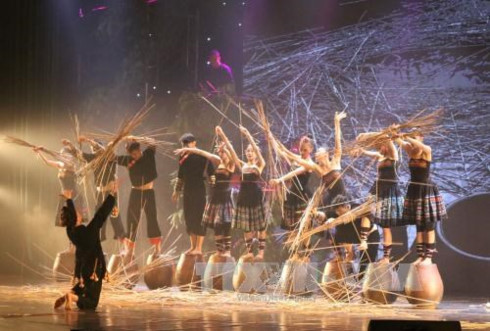
The International Dance Festival 2017 kicked off in the northern province of Ninh Binh on September 16, drawing the participation of about 300 domestic and foreign artists.

The festival gathered
about 15 dance troupes from 14 countries, including Laos, Cambodia, Myanmar,
the Philippines, the Republic of Korea, Colombia, Singapore, Egypt, Japan,
Indonesia, China, Bangladesh, Russia, Malaysia and host Vietnam.
The artists will stage dances lasting from 20 to 40 minutes that
will be judged on artistic merit.
As many as 200 artists from nine Vietnamese troupes participated
in the event. They were from the Vietnam Dance College, Vietnam National Ballet
and Opera, Military Culture and Arts College, southern-based Sao Bien Folk
Dance and Sing Theatre and provincial troupes from Cao Bang, Ha Giang, Hoa
Binh, Son La and Tuyen Quang.
The festival was designed to bolster Vietnam’s culture and art
cooperation with other countries, offering a chance to promote the country’s
images, people and culture to international friends.
It was also viewed as an opportunity for Vietnamese dancers to meet
and learn from experiences of other artists. The festival will run until
September 22.
Source: VOV
The People’s Committee of Lac Son district held a ceremony on April 28 to receive the provincial relic certificate for the ancient rock carving site at Suoi Co stream, located in My Thanh commune.
A special music show titled "The country is in the fullness of joy” has been held at Hoa Binh Square in Hoa Binh city in celebration of the 50th anniversary of the liberation of the South and national reunification (April 30, 1975–2025).
The People's Committee of Lo Son commune, Tan Lac district, has organised the local annual traditional stream fishing festival on April 19 - 20.
As a land deeply intertwined with human history and Vietnam’s millennia-long journey of nation-building and defence, Hoa Binh is often revered for its epic tales and legends.
Residents of Hoa Binh boast a rich cultural identity, reflected in their unique language, traditional attire, customs, and folk melodies – described as "sweet as honey, clear as a mountain stream.”
Lac Son district’s Vu ban town held the 2025 Truong Kha temple festival on April 12–13 (the 15th–16th days of the third lunar month). Since its revival in 2019, the festival has been organised every three years, preserving valuable intangible heritage while meeting the community’s cultural and spiritual needs.



